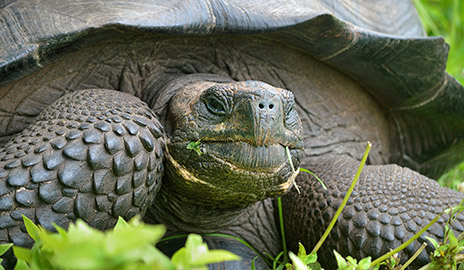New Species of Galapagos Giant Tortoise Identified
 October 24: A team of researchers from Yale University have discovered a new species of giant tortoise in the Galapagos.
October 24: A team of researchers from Yale University have discovered a new species of giant tortoise in the Galapagos.
A few hundred giant tortoises living on one side of Santa Cruz Island in the Galapagos actually are a separate species from a second, larger population living less than 10 kilometers away, a new Yale-led genetic analysis has revealed.
The recognition of the Eastern Santa Cruz tortoise as a distinct species provides new insight into the history of these evolutionary icons that live on the island chain that inspired Charles Darwin.
While the larger western population on the island numbers about 2,000 and lives mostly in a protected national park, the smaller number of Eastern Santa Cruz tortoises may need more protection, said Adalgisa “Gisella” Caccone, senior research scientist in the Department of Ecology and Evolutionary Biology and senior author of the research published in the journal PLOS ONE.
“Naming a new species elevates its status and enables more resources to be devoted to protecting its range,” Caccone said.
Researchers had noted differences in the shells, or carapaces, of the two populations of giant tortoises but had assumed these were simply variations within the same species. However, a close genetic analysis revealed they were in fact as genetically distinct as species living on different islands.
“The story tells us something about patterns of divergence in the giant tortoises in the Galapagos and how colonization of the archipelago did not follow a simple linear model,” Caccone said.
The study was conducted by an international group, which included researchers from the University of Crete, British Columbia and researchers from several U.S.-based universities and foundations.
Source: Bill Hathaway, Yale University
